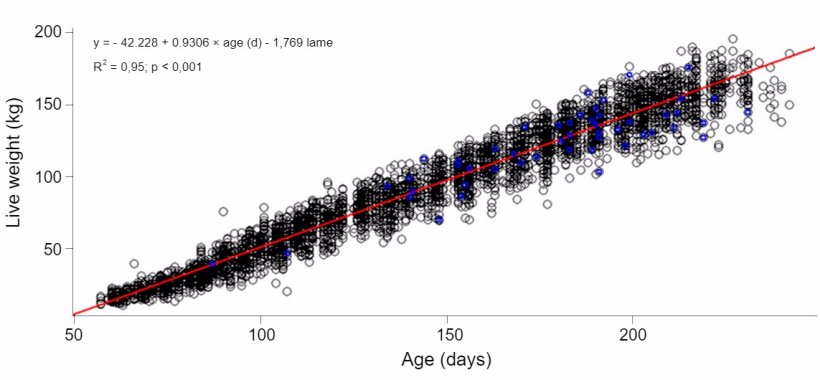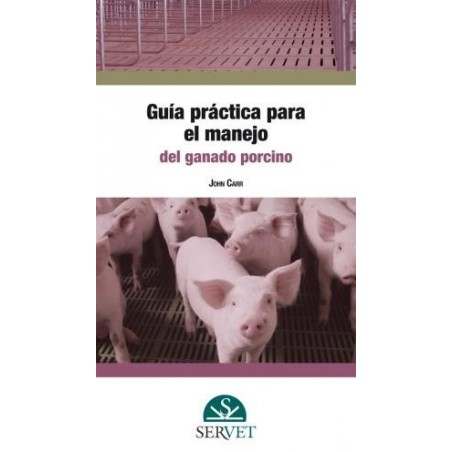The development of the future breeding sow during rearing is key to maximize performance and sow longevity. The incorporation of all the objectives that producers and veterinarians would like to meet during the rearing and quarantine period can be difficult in practice. As a whole, obtaining replacements —originated in many cases from other countries— fullfilling the age split needed —thus ensuring a correct skeletal development at the desired growth rate—, achieving immunity against the main agents present at the destination farm, and reaching a correct state of body reserves and weight at first service can be complex.
Replacement gitls represent, approximately, a 40-50% and, in recent years, the trend has been to exceed even 50% (BDPorc). 20% or more of the sows that start the production cycle do not reach a second farrowing (López-Serrano et al., 2000; Lucia et al., 2000); and leg weakness and lameness are the main reason for nulliparous culling (Engblom et al., 2008, Jense et al., 2010). In addition, it is known that lameness (10-15% on farm) is related to reproductive failure and reduces productivity (Heinonen et al., 2013). Lameness is also an important source of economic losses (25-180 USD per lame sow) (Deen et al., 2008; Schuttert, 2008).

The main cause of lameness in growing gilts are problems in the joint cartilage of non-infectious origin that are defined as osteochondrosis (Ytrehus, 2007). Nutrition, mechanical stress, genotype and growth rate are the factors that apparently influence the occurrence of osteochondrosis (Koning et al., 2014a, 2014b; Quinn et al. 2015.) The initial hypothesis is that there is a weight threshold in which developing bone and cartilage are weak and sensitive to joint injuries (Busch and Wachmann 2011). However, there is a wide controversy in the literature about whether a high growth rate actually increases the risk of osteochondrosis and lameness (Yetrehus et al., 2004, Tóth et al., 2016).
An observational study assessed the occurrence of lameness of non-infectious origin in growing gilts. A total of 600 gilts (Landrace × Yorkshire) between 57 and 106 days of age and 25.6 ± 8.6 kg of body weight (WP) were monitored for a rearing period of 20 weeks. The young gilts were distributed in age groups of 10 animals per pen of about the same weight. They were fed ad libitum and in three phases (of 14, 70 and 52 days) (ME: 2950, 2850, 2750 kcal / kg, respectively) based on corn, wheat, barley and soybean. A commercial breeder rearing premix was used. The gilts were individually weighed and their walking action and lameness presence evaluated on seven occasions (Table 1). The evolution of their live weight (LW) and total average daily gain (ADG) was assessed and compared to the one calculated from the LW intervals before and after the detection of lameness. A logistic regression was also used to study LW at the timepoint when lameness was detected according to age.
The prevalence of lameness was 8.34%, of which, 46.15% apparently recovered. LW when lameness was first detected resulted in a confidence interval of 114.6 - 130.5 kg and 170.9 - 187.8 days of age. From 115 kg, the lame sows showed a lower LW and ADG than the unaffected ones. In addition, when the LW or the ADG previous to the detection of lameness were used, it was not possible to differentiate the lame animals from the ones that would not become lame. In fact, no differences were observed for ADGs between 29-111 and 50-111 kg. However, when the LW range was extended to 29-130 kg in order to estimate the ADG, the lame sows showed a lower growth rate (882-949 g / d) than the non-lame ones (942-963 g / d.) Therefore, the results indicate that lameness increased with LW and time, independently of previous performance.
Table 1. Description of weight, age and detection of lame nulliparous during the rearing phase.
| No. Obs. | Age (days) |
Average LW (kg) |
LW Lame (kg) |
Lame (%) |
New lame (%) | Accumulative Lame(%) | Recovered Lame(%) |
| 1 | 75 | 25.6 | 25.8 | 0.17 | 0.17 | 0.17 | - |
| 2 | 98 | 49.1 | 49.4 | 0.17 | 0.00 | 0.17 | - |
| 3 | 117 | 68.1 | 67.4 | 0.33 | 0.17 | 0.34 | 5.9 |
| 4 | 144 | 90.9 | 90.4 | 1.67 | 1.33 | 1.67 | - |
| 5 | 170 | 117.1 | 114.6 | 2.83 | 2.17 | 3.84 | 60.5 |
| 6 | 191 | 137.1 | 133.6 | 5.18 | 3.00 | 6.84 | 23.0 |
| 7 | 212 | 153.8 | 147.6 | 4.60 | 1.50 | 8.34 | 40.2 |

Graph 1. Evolution of live weight with age in lame (blue) and not lame (black) gilts
The development of osteochondrosis occurs around 10-12 weeks of age (Grevenhof et al., 2012; Tóth et al., 2016), and it is mainly subclinical (Yetrehus et al., 2004). The lesions have been shown to heal during growth, and 51-69% of them to have healed completely at 180 days of life (Olstad et al., 2014). Therefore, the presence of clinical lameness in this study is likely to respond to severe or unhealed lesions (detected between 173-195 days of age). It is reasonable to accept that any strategy to improve the development of the joints —ensuring a correct calcium:digestible phosphorus ratio; replacing inorganic micro-minerals supplementation with organic minerals supplementation; adding vitamins and antioxidants; looking for sources of sulphides for the development of cartilage; avoiding physical stress; or minimizing the load of LW— should be implemented before the animals reach a LW of 100 kg. Even so, it is not known if the "window" that allows for a minimization of lameness happens between 10-12 weeks of age (when osteochondrosis occurs), or between 24-27 weeks of age (when lameness appears).
Overall, the condition of lameness meant a reduction in performance in terms of growth. No evidence was found suggesting a positive relationship between growth rate and the incidence of lameness when diets are formulated and supplemented following specific criteria for skeletal and joint development during the rearing period.





